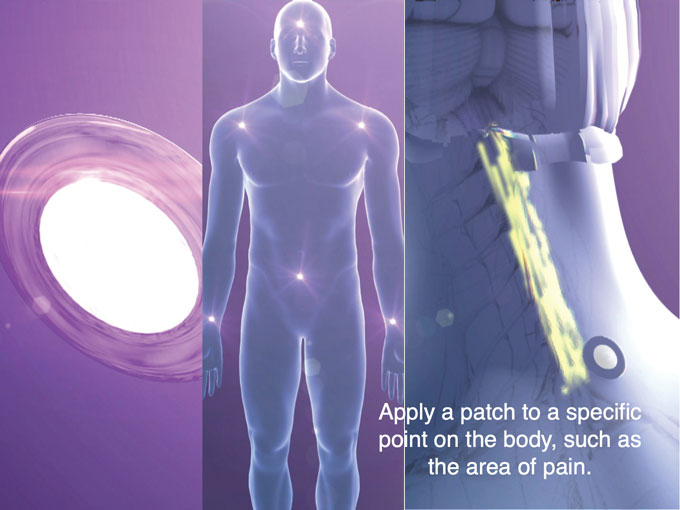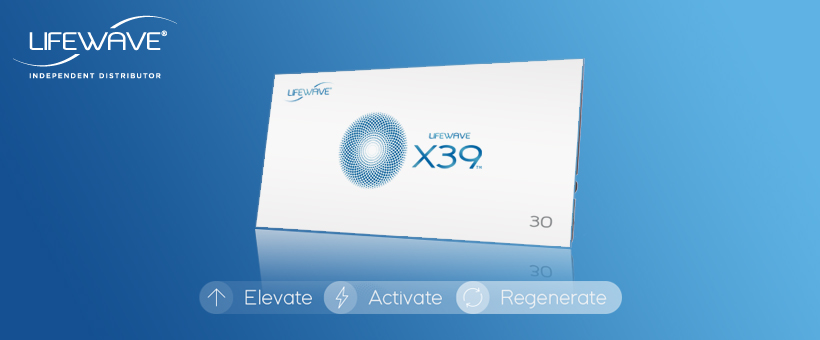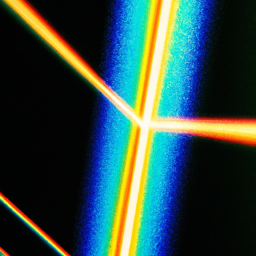Are you curious about the potential benefits of Infrared Light Therapy for neurological conditions? This article explores the emerging field of using infrared light to treat various neurological ailments. From promoting brain health and reducing symptoms of conditions such as Alzheimer’s and Parkinson’s, to aiding in stroke recovery and relieving chronic pain, infrared light therapy shows promise in improving the lives of those affected by neurological disorders. Join us as we uncover the potential benefits of this innovative treatment option.
Understanding Infrared Light Therapy
Definition and Principles of Infrared Light Therapy
Infrared light therapy, also known as photobiomodulation therapy, is a non-invasive and drug-free treatment approach that utilizes low-level infrared light to stimulate cellular activity and promote healing in the body. It involves the use of specific wavelengths of light that are absorbed by the body’s tissues, triggering a series of biological responses. These responses include increased blood circulation, reduced inflammation, and enhanced cellular repair, all of which contribute to the potential benefits of infrared light therapy for neurological conditions.
Different Types of Infrared Light Therapy
There are various types of infrared light therapy that can be used for the treatment of neurological conditions. One common form is the use of infrared light-emitting diodes (LEDs), which emit specific wavelengths of light that can penetrate deep into the tissues. Another type is the use of infrared lasers, which provide a more focused and concentrated light source for targeted treatment. Additionally, there are also infrared saunas, which use infrared heat to promote relaxation and provide a holistic approach to overall wellness.
Measuring and Controlling Infrared Light Intensity
The intensity of infrared light used in therapy is an important factor in ensuring safe and effective treatment. Light intensity is typically measured in milliwatts per square centimeter (mW/cm²). It is crucial to balance the therapeutic benefits of higher light intensity with the need to prevent any potential harm or side effects. Controlling the intensity can be achieved through factors such as adjusting the distance between the light source and the treatment area or using filters to modulate the intensity. It is essential to consult with a knowledgeable healthcare professional to determine the appropriate and safe intensity for each individual.
Neurological Conditions and their Impact
Common Neurological Conditions
Neurological conditions encompass a wide range of disorders affecting the nervous system, including the brain, spinal cord, and nerves. Some common neurological conditions include Alzheimer’s disease and other forms of dementia, Parkinson’s disease, multiple sclerosis, stroke, traumatic brain injury, and neuropathy. These conditions can have a significant impact on an individual’s mental and physical well-being, often resulting in cognitive impairments, motor dysfunction, pain, and other debilitating symptoms.
The Impact of Neurological Conditions on Daily Life
Neurological conditions can profoundly impact an individual’s daily life in various ways. They can lead to difficulties with memory, attention, and problem-solving skills, affecting one’s ability to perform tasks and participate in social activities. Motor impairments, such as tremors or muscle weakness, can limit mobility and independence. Additionally, neurological conditions often cause emotional and psychological challenges, including depression, anxiety, and increased stress levels, which can further hinder overall quality of life.
Current Treatment Approaches and Limitations
The current treatment approaches for neurological conditions often focus on symptom management rather than addressing the underlying causes. Medications, physical therapy, and occupational therapy are commonly used to help manage symptoms and improve functionality. However, these treatments may have limitations, such as limited effectiveness, potential side effects from medications, and the need for ongoing therapy sessions. This has led to an ongoing search for alternative treatment options that can provide additional benefits and potentially enhance the overall outcomes for individuals with neurological conditions.
The Potential Benefits of Infrared Light Therapy
Stimulating Cellular Activity and Repair
Infrared light therapy has been shown to stimulate cellular activity and promote repair processes in the body. When infrared light is absorbed by the cells, it can increase the production of adenosine triphosphate (ATP), which is a key energy source for cellular functions. This enhanced energy production can facilitate cellular repair and regeneration, potentially offering benefits for neurological conditions characterized by degeneration or damage to the nervous system.
Improvement in Blood Circulation and Oxygenation
One of the significant benefits of infrared light therapy is its ability to improve blood circulation and oxygenation in the treated areas. The infrared light stimulates the production of nitric oxide, a molecule known to promote vasodilation and improve blood flow. This increased circulation can enhance nutrient and oxygen delivery to the tissues, supporting the healing process and potentially improving neurological function.
Reduction of Inflammation and Pain
Infrared light therapy has anti-inflammatory properties that can help reduce inflammation in the body. Inflammation is often a contributing factor in many neurological conditions, leading to tissue damage and exacerbation of symptoms. By reducing inflammation, infrared light therapy can alleviate pain and discomfort, promoting a better quality of life for individuals with neurological conditions.
Enhancement of Neuroplasticity and Nerve Regeneration
Neuroplasticity refers to the brain’s ability to adapt and reorganize its structure and function. Infrared light therapy has shown the potential to enhance neuroplasticity, meaning it can facilitate changes in the brain that promote better recovery from neurological damage or dysfunction. Additionally, studies have suggested that infrared light therapy may also promote nerve regeneration, potentially offering benefits for conditions characterized by nerve damage or degeneration.
Promotion of Neurotransmitter Release and Balancing
Neurotransmitters are chemicals in the brain that facilitate communication between neurons. Imbalances in neurotransmitter levels can contribute to neurological conditions, such as depression or anxiety. Infrared light therapy has been shown to promote the release and balance of neurotransmitters, potentially improving mood and mental well-being for individuals with neurological conditions.
Enhancing Overall Brain Function
Infrared light therapy has the potential to enhance overall brain function by improving neuronal connectivity and communication. It can stimulate the growth of new blood vessels and nerve cells, enhance synaptic activity, and increase the production of essential proteins involved in brain repair and maintenance. These effects can contribute to improved cognitive function, memory, and overall neurological health.
Mitigation of Neurological Symptoms
Infrared light therapy has been reported to alleviate a range of neurological symptoms, including pain, stiffness, muscle weakness, tremors, and cognitive impairments. By targeting the underlying physiological processes in neurological conditions, such as inflammation, oxidative stress, and impaired neuronal function, infrared light therapy offers the potential for symptom relief and improved quality of life.
Clinical Research and Studies
Overview of Clinical Studies on Infrared Light Therapy
There is a growing body of scientific research investigating the effects of infrared light therapy on neurological conditions. Clinical studies have explored the potential benefits of infrared light therapy in various conditions, including Alzheimer’s disease, Parkinson’s disease, multiple sclerosis, stroke recovery, traumatic brain injury, and neuropathy. These studies employ rigorous methodologies, including randomized controlled trials and controlled laboratory experiments, to assess the efficacy and safety of infrared light therapy.
Results and Findings from Neurological Condition Trials
The results from clinical trials investigating the effects of infrared light therapy on neurological conditions have shown promising outcomes. For example, studies in Alzheimer’s disease have reported improvements in cognitive function, reduced neuroinflammation, and increased cerebral blood flow with the use of infrared light therapy. In Parkinson’s disease, infrared light therapy has been shown to improve motor function, reduce tremors, and increase dopamine production. Similarly, studies in stroke recovery have demonstrated enhanced recovery of motor function and reduced spasticity with the use of infrared light therapy.
Methodological Considerations and Future Research Directions
While the results from clinical studies are encouraging, it is essential to consider the methodological limitations and variations among the studies. Factors such as treatment protocols, light intensity, duration, and frequency of sessions can vary between studies, making it challenging to compare results directly. To further strengthen the evidence base, future research should focus on standardized protocols, larger sample sizes, longer follow-up periods, and objective outcome measures. Additionally, well-designed studies investigating the effects of infrared light therapy on specific neurological conditions can provide valuable insights and inform clinical practice.
Application of Infrared Light Therapy for Specific Neurological Conditions
Alzheimer’s Disease and Dementia
Infrared light therapy holds potential benefits for individuals with Alzheimer’s disease and dementia. The stimulation of brain cells and improvement in blood flow can help mitigate cognitive decline, enhance memory and attention, and reduce neuroinflammation. Research has shown that infrared light therapy may slow down the progression of neurodegeneration and provide symptomatic relief in individuals with Alzheimer’s disease and dementia.
Parkinson’s Disease
Infrared light therapy has demonstrated promising outcomes in Parkinson’s disease. It can improve motor function, reduce tremors, and increase the production of dopamine, a neurotransmitter that is deficient in Parkinson’s disease. Infrared light therapy used in conjunction with medication and physical therapy may provide comprehensive symptom management and improve the quality of life for individuals with Parkinson’s disease.
Multiple Sclerosis
Multiple sclerosis (MS) is a chronic condition characterized by inflammation and damage to the central nervous system. Infrared light therapy has shown potential benefits in reducing inflammation, promoting myelin repair, and alleviating MS-related symptoms such as fatigue, pain, and muscle weakness. Further research is needed to explore the long-term effects and optimal treatment protocols for individuals with MS.
Stroke Recovery
Infrared light therapy has emerged as a promising adjunctive therapy for stroke recovery. By increasing blood flow to the affected areas of the brain, it can support the healing process, enhance motor function recovery, and reduce spasticity. Early intervention with infrared light therapy in stroke rehabilitation programs has shown positive outcomes, emphasizing its potential as a neurorehabilitation tool.
Traumatic Brain Injury
Traumatic brain injury (TBI) can result in long-term neurological impairments and cognitive deficits. Infrared light therapy offers potential benefits in reducing neuroinflammation, promoting neuronal recovery, and improving cognitive function in individuals with TBI. The timing of therapy initiation and treatment duration may play a critical role in optimizing outcomes for TBI patients.
Neuropathy and Nerve Damage
Neuropathy and nerve damage can cause chronic pain, numbness, and sensory disturbances. Infrared light therapy has been shown to improve nerve regeneration, reduce pain, and alleviate other neuropathic symptoms. By stimulating cellular repair processes and promoting blood flow to damaged nerves, infrared light therapy offers potential benefits for individuals with neuropathy and nerve damage.
Combination Treatments with Infrared Light Therapy
Infrared Light Therapy and Physical Rehabilitation
Combining infrared light therapy with physical rehabilitation techniques can enhance the overall outcomes for individuals with neurological conditions. Physical therapy exercises and infrared light therapy can work synergistically to promote motor function recovery, reduce muscle stiffness, and enhance overall mobility. This integrated approach can expedite the rehabilitation process and improve functional outcomes.
Infrared Light Therapy and Pharmacological Interventions
Infrared light therapy can be used in conjunction with pharmacological interventions to enhance the efficacy of medications for neurological conditions. Research has shown that infrared light therapy can increase the brain’s uptake of certain medications, potentially improving drug delivery to the targeted areas. Combination approaches can offer a comprehensive and personalized treatment plan for individuals with neurological conditions.
Infrared Light Therapy and Behavioral Therapies
Behavioral therapies, such as cognitive rehabilitation and psychotherapy, can be combined with infrared light therapy to address the emotional and psychological aspects of neurological conditions. Infrared light therapy’s potential to improve neurotransmitter balance and enhance overall brain function can complement the effects of behavioral therapies, promoting overall mental well-being and emotional resilience.
Infrared Light Therapy and Cognitive Stimulation
Cognitive stimulation exercises, such as memory training and problem-solving tasks, can be combined with infrared light therapy to enhance cognitive function in individuals with neurological conditions. The cellular and neuroplasticity-enhancing effects of infrared light therapy can potentially facilitate the absorption and retention of cognitive stimulation, maximizing its benefits for cognitive rehabilitation.
Safety and Precautions
Potential Side Effects of Infrared Light Therapy
Infrared light therapy is considered safe and well-tolerated when used appropriately. However, there are potential side effects, although rare, that should be considered. These may include temporary mild skin redness, dryness, or sensitivity to light. It is crucial to follow the recommended treatment guidelines, consult with a healthcare professional, and adhere to appropriate safety precautions to minimize the risk of adverse effects.
Considerations for Safe and Effective Application
To ensure safe and effective application of infrared light therapy, several considerations should be taken into account. These include selecting appropriate treatment parameters, such as light intensity, wavelength, and treatment duration, based on the individual’s specific condition and needs. Safety precautions, such as wearing protective eyewear and avoiding direct exposure to the eyes, should also be followed. Additionally, regular monitoring of treatment progress and adjustments as needed, under the guidance of a healthcare professional, are important for optimal outcomes.
Contraindications and Precautions
While infrared light therapy is generally considered safe, there are certain conditions and situations where its use may be contraindicated or require extra precautions. These may include pregnancy, certain types of cancer, open wounds or infections, acute inflammation, photosensitivity conditions, and individuals taking photosensitizing medications. It is essential for individuals with neurological conditions to consult with a healthcare professional to determine if infrared light therapy is suitable for their specific situation and to discuss any potential contraindications or precautions.
Availability of Infrared Light Therapy
Infrared Light Therapy at Clinical Settings
Infrared light therapy is available at various clinical settings, such as hospitals, rehabilitation centers, and specialized wellness clinics. These facilities often have trained healthcare professionals who can provide individualized treatment plans and guide patients through the therapy sessions. In a clinical setting, infrared light therapy can be combined with other treatment modalities to provide comprehensive care for individuals with neurological conditions.
Home-Based Infrared Light Therapy Devices
Advancements in technology have made home-based infrared light therapy devices more accessible to individuals with neurological conditions. These devices come in various forms, including handheld devices, light therapy panels, and infrared saunas designed for home use. Home-based devices allow individuals to incorporate infrared light therapy into their daily routines and continue treatment between clinical sessions. It is important to choose FDA-approved devices and follow manufacturer guidelines for safe and effective use at home.
Professional Guidance and Consultation
When considering the use of infrared light therapy for neurological conditions, seeking professional guidance and consultation is crucial. A healthcare professional, such as a neurologist, physiatrist, or physical therapist, can assess the individual’s condition, provide personalized recommendations, and guide them through the treatment process. Professionals can tailor treatment plans, ensure appropriate safety measures, and monitor progress to optimize the benefits of infrared light therapy.
Conclusion and Future Directions
Summary of Potential Benefits for Neurological Conditions
Infrared light therapy holds significant potential benefits for individuals with neurological conditions. It can stimulate cellular activity, improve blood circulation, reduce inflammation, promote neuroplasticity, enhance neurotransmitter balance, and improve overall brain function. By targeting the underlying physiological processes and promoting healing in the body, infrared light therapy offers the potential for symptom relief and improved quality of life for individuals with neurological conditions.
Challenges and Areas for Further Investigation
While the existing research provides promising evidence, there are still challenges and limitations in the field of infrared light therapy for neurological conditions. Methodological variations, limited sample sizes, and the need for further long-term studies are some of the challenges that need to be addressed. Additionally, more research is needed to determine optimal treatment protocols, treatment duration, and frequency, as well as the effects of different light intensities and wavelengths on specific neurological conditions.
Integration of Infrared Light Therapy into Neurological Care
The integration of infrared light therapy into neurological care requires collaboration among healthcare professionals, researchers, and manufacturers. By fostering partnerships and promoting interdisciplinary approaches, the field can advance the development of evidence-based protocols, establish standardized treatment guidelines, and provide opportunities for informed decision-making and personalized care. As research continues to uncover the potential benefits and mechanisms of infrared light therapy, it has the potential to play a significant role in improving the care and outcomes for individuals with neurological conditions.





